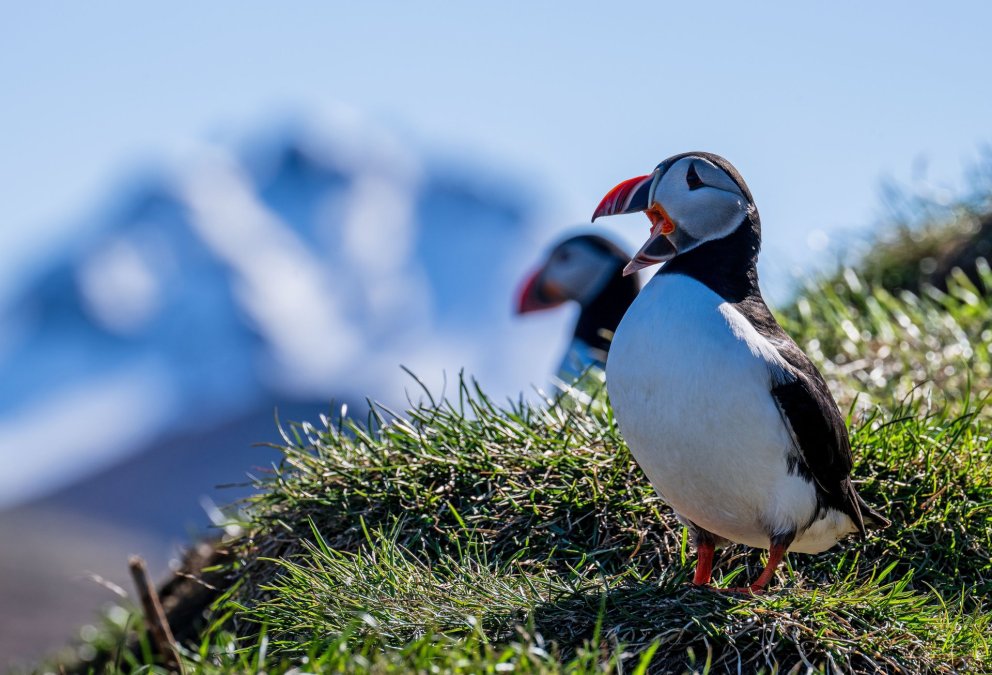Birdwatching in East Iceland
Where to see puffins in East Iceland
Of all the species of birds that can be encountered on Icelandic shores, travellers surely have the most affection for the puffin. Whether it’s the speed at which this round little bird needs to flap its wings to stay airborne or the clumsy landings it makes when it is returning to the nest to feed its chick, watching puffins is absolutely delightful.
The best place to see puffins in East Iceland is at the Hafnarhólmi marina in Borgarfjörður Eystri, where a viewing hide and wooden platforms allow visitors to observe a colony believed to number around 10,000 breeding pairs.
Seasonal guide to Iceland's birdlife
If you’re looking for a unique way to observe birds and learn about their cultural importance, consider visiting an eiderdown farm. Along with seeing the birds up close, visitors can discover how their down is harvested, cleaned, and processed.
Located at Ytri-Nýpur, just north of the village of Vopnafjörður, visits are available from late May to early July. Eider ducks are wild, so the experience includes a guided walk near their nesting areas, where you’ll learn about the efforts to protect this special species. You’ll also have the chance to spot other Icelandic birds during the tour.
Boat Tours for birdwatching
This uninhabited island of Papey hasn’t always been so. People once lived here, though never in large numbers. There were friars here in the 12th century and at its peak in the 18th century, the population was only 16 strong. Living in such isolation was tough and the last residents moved to the mainland in the 1960s.
Papey Island is a sanctuary for wild birds, home to large colonies of Atlantic puffins, guillemots, and other species. Access to the island can be tricky, but if you’re near Djúpivogur from June to August, Voxey Tours offers guided boat trips to Papey, making it easy to experience this special bird haven.
Birdwatching in forest and wetlands
The Jökla is East Iceland’s longest river and there are a number of bird watching opportunities at different points along its course. This is the river that flows through Stuðlagil canyon, the dramatic gorge famous for its vivid blue water and stunning basalt columns. It’s also home to pink-footed geese, so keep your eyes peeled while you’re in the area.
As you approach the Jökla’s delta, a different opportunity arises. Here in the lowlands, the wetland environment supports a small population of great skuas, large birds with a distinctive brown and white plumage. Another colony inhabits the Lagarfljót delta, while Arctic skuas prefer to hang out inland.
In the northeast of Iceland at Langanes – the name translates as long peninsula – a wide variety of seabirds are present during the summer months. These migratory species include guillemots and kittiwakes; Stórikarl is also home to the third largest gannet nesting site in the world.
Hallormsstaðaskógur, Iceland’s largest forest, is also a great spot for birdwatching. Keep an eye out for the Redwing, the tiny Goldcrest and the elusive Eurasian wren. The forest’s mix of native and planted trees provides shelter for a variety of bird species, making it a peaceful and rewarding place for nature lovers.

